{title}
{publish}
{head}
Visiting Lam Thuy Village, Hai Hung Commune, Hai Lang District these days, one can truly feel the remarkable transformation taking place. A prosperous and peaceful rural landscape is evident in the well-built homes, the spacious concrete roads, the vibrant flower beds lining the streets, and the joyful sparkle in the eyes of the local people. All these achievements stem from the aspirations for development shared by every resident of Lam Thuy Village.
According to the village’s historical records, in the early 14th century, King Che Man of Champa offered Chau O and Chau Ly as a dowry for Princess Huyen Tran (1306). In the spring of 1307, Emperor Tran Anh Tong issued a decree renaming the two regions as Chau Thuan and Chau Hoa. He dispatched an official, Doan Nhu Hai, to pacify the inhabitants of these newly annexed territories and encouraged settlers from Chau Hoan and Chau Dien to migrate and develop the land.
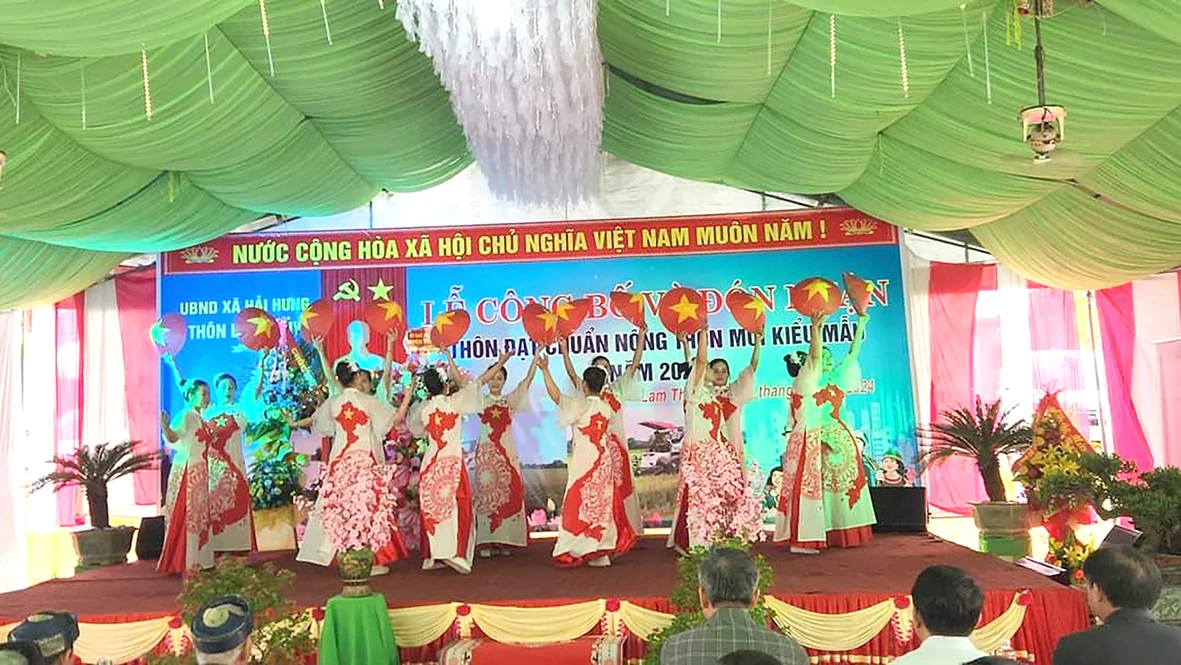
Artistic performance program at the Ceremony for Recognizing Lam Thuy Village as a Model New Rural Area. Photo: N.T.A
Among the settlers was a man named Ngo Nam, also known as Trang, who chose a fertile but sparsely populated area to establish what is now Lam Thuy Village. Today, the village consists of 17 hamlets organized into 11 residential zones with 11 production teams, covering a total area of 594.8 hectares, including 220 hectares of rice fields. Lam Thuy Village is home to 635 households and a population of 2,820.
According to village records and other historical sources, the name Lam Thuy has existed for approximately 600 years. Over the centuries, Lam Thuy and five other villages in what was formerly Hai Vinh Commune have stood together in solidarity, defending and building their homeland.
During the wars against foreign invaders, Lam Thuy Village became a fiercely contested battleground, where courage was tested beyond mere weaponry. The village has nearly 130 martyrs, 57 wounded soldiers, and several women recognized as Heroic Vietnamese Mothers. Hundreds of villagers have been awarded medals and commendations for their contributions.
Lam Thuy Village was honored with the Second and Third-Class Liberation Medals by the Provisional Revolutionary Government of the Republic of South Vietnam. The village played a significant role in earning its commune the prestigious title of Hero of the People’s Armed Forces, awarded by the Party and the State.
Lam Thuy is a land steeped in history. It is home to Tram Deng, once a staging area for troops heading into battle; Lam Thuy Pagoda, where military plans were devised, and revolutionary cadres were sheltered; and iconic hamlets such as Ta, Con, and Hoi, whose names evoke memories of heroic resistance. The northern and southern banks of the Vinh Dinh River, which once transported countless troops to the frontlines, are reminders of the village’s storied past.
Following the liberation, Lam Thuy, like many other villages, faced immense war-induced hardships. Rebuilding in an environment where natural conditions were not favorable meant that the only solution was to harness the strength of human solidarity. The key was to unite efforts and nurture a collective aspiration for development, with a crucial focus on participating in the new rural development movement.
Vo Cong Trong, the village head, explained that establishing a model new rural village was no easy task. From the outset, the village’s leadership, along with the local Party Committee and the Front’s working committee, prioritized effective communication and mobilization. They conducted thorough assessments of the current situation and identified achievable criteria first, tackling more challenging aspects later.
Tasks assigned to individual households were handled by those families, while community-wide projects were undertaken collectively. Local officials, Party members, and expatriates were all encouraged to contribute. This strategic and inclusive approach generated widespread public support.
By 2024, Lam Thuy Village had developed a strong economy and ensured a high standard of cultural, material, and spiritual life for its residents. The rural landscape had been significantly improved, with clean and spacious roads and an attractive environment. The political system remained transparent and robust, while security and public order were well maintained.
Agricultural production embraced scientific and technical advancements, with crop and livestock adjustments aimed at boosting productivity and economic efficiency. The irrigation and inter-field transportation systems were modernized. The village is now home to several family-run farms and one large-scale industrial pig farm meeting regulatory standards. Local specialty products, such as three-star OCOP seaweed-flavored peanuts, along with chili powder, bean sprouts, lotus, scallions, and high-quality rice, have gained strong market demand. Household economies have flourished.
The Lam Thuy Cooperative was recognized by the provincial People’s Committee as an exemplary cooperative. It has played a crucial role in agricultural production and market linkage, annually cultivating 30 hectares of rice seeds, producing 270 tons of seed rice and 1,350 tons of commercial rice. It has also developed several specialized farming models, including a 5-hectare sandy-soil shallot plantation, 1.7 hectares of safe chili cultivation, and 3.5 hectares for lotus and fish farming. By the end of 2024, the village’s average per capita income had reached $2,400, while the multidimensional poverty rate had fallen to just 3%.
To support development, the village encouraged residents to donate 2,772 square meters of land for road expansion. Over the past three years, Lam Thuy Village has completed a standard rural transportation network, including 2 kilometers of graded roads leading to sandy areas, two flood-resistant community centers, a waste collection site, and multiple infrastructure projects such as cultural and sports centers, street lighting, gateways, and water stations. These efforts have fundamentally transformed the village.
In addition to economic growth, cultural institutions have been progressively developed, enhancing the quality of life. The village now boasts two multipurpose cultural houses serving as disaster shelters, seven sports facilities, a playground and exercise area for the elderly and children, two community loudspeaker systems, 16 welcome gates, five propaganda boards, 38 slogan banners, 16 LED signboards, and 17 meters of decorative LED lighting. Cultural, artistic, and sports activities continue to thrive.
Annual events such as football and volleyball tournaments, traditional boat races, chess competitions, and folk games are consistently organized. Lam Thuy Village has also partnered in vocational training programs, encouraging skill development, labor export, and a shift from agricultural employment to industrial, construction, and service sectors. The workforce now includes 331 people in agriculture and aquaculture, 573 in industry and construction, 48 in services, and 248 working as officials, civil servants, and teachers in local institutions.
Rural beautification efforts remain a priority. Many households have transformed their gardens by cultivating high-value crops and livestock. Environmental protection initiatives have been actively promoted, with 18 designated waste collection and treatment points established across the village. Tree planting campaigns and model flower-lined roads have helped create a greener, cleaner, and more picturesque village. Currently, 8 out of 11 residential zones have installed alley signs and house number plates through community funding. Residents are actively engaged in enhancing and maintaining their surroundings, making Lam Thuy a model for rural development.
Nguyen Tri Anh - Ngoc Mai

QTO - Not letting summer slip by in vain, many students in Quang Tri have taken the initiative to teach English to younger children. Through each lesson,...
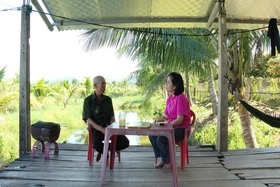
QTO - Returning from the northern border front with a 2/4 disability, it seemed his journey of service had come to an end. Yet, this wounded soldier began...
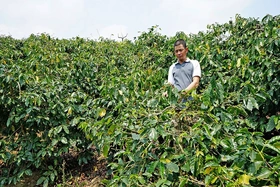
QTO - Quang Tri's coffee industry faces both significant challenges and promising opportunities as it navigates the implementation of the European Union's...
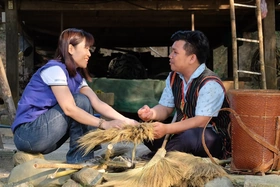
QTO - From November 16, 2023, to December 15, 2024, the central province of Quang Tri successfully mobilized 61 foreign non-governmental projects (NGOs),...
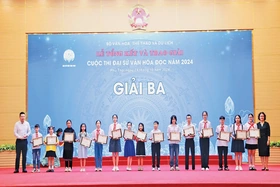
QTO - Despite being a student with severe mobility impairment, Hoang Duc Son from class 10A10 at Vinh Linh High School has traveled to many places through...

QTO - To effectively implement the national target program for socio-economic development in ethnic minority and mountainous areas from 2021 to 2025, the...
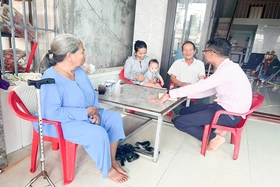
QTO - South Korea has become a highly appealing destination for Vietnamese workers, boasting attractive working conditions and competitive salaries.
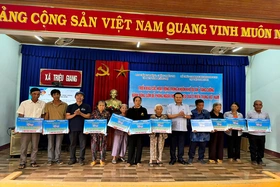
QTO - The Steering Committee for Natural Disaster Prevention and Search and Rescue (NDPSR) in Quang Tri Province in coordination with Catholic Relief...
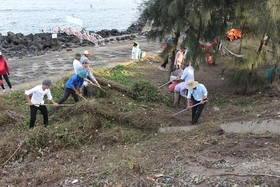
QTO - Established in 2009, the Con Co Island Marine Reserve spans a total area of 4,532 hectares, divided into three functional zones: a strictly protected...
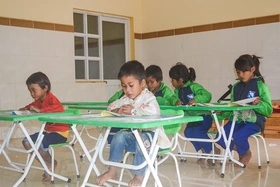
QTO - Recently, using funds from the National Target Program for socio-economic development in ethnic minority and mountainous areas, various departments,...

QTO - In recent years, Quang Tri Province has significantly improved its forest management and protection efforts, particularly in areas inhabited by...

QTO - On August 7, Vice Chairman of the Quang Tri Provincial People's Committee Hoang Nam signed a decision approving the project "Support for Nutritional...